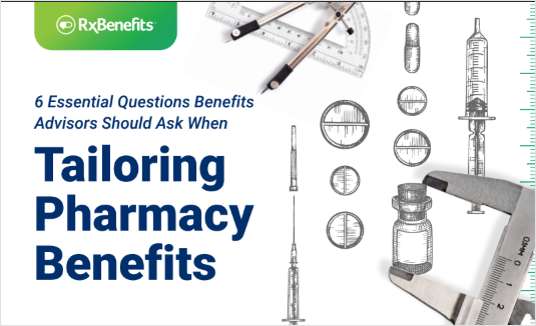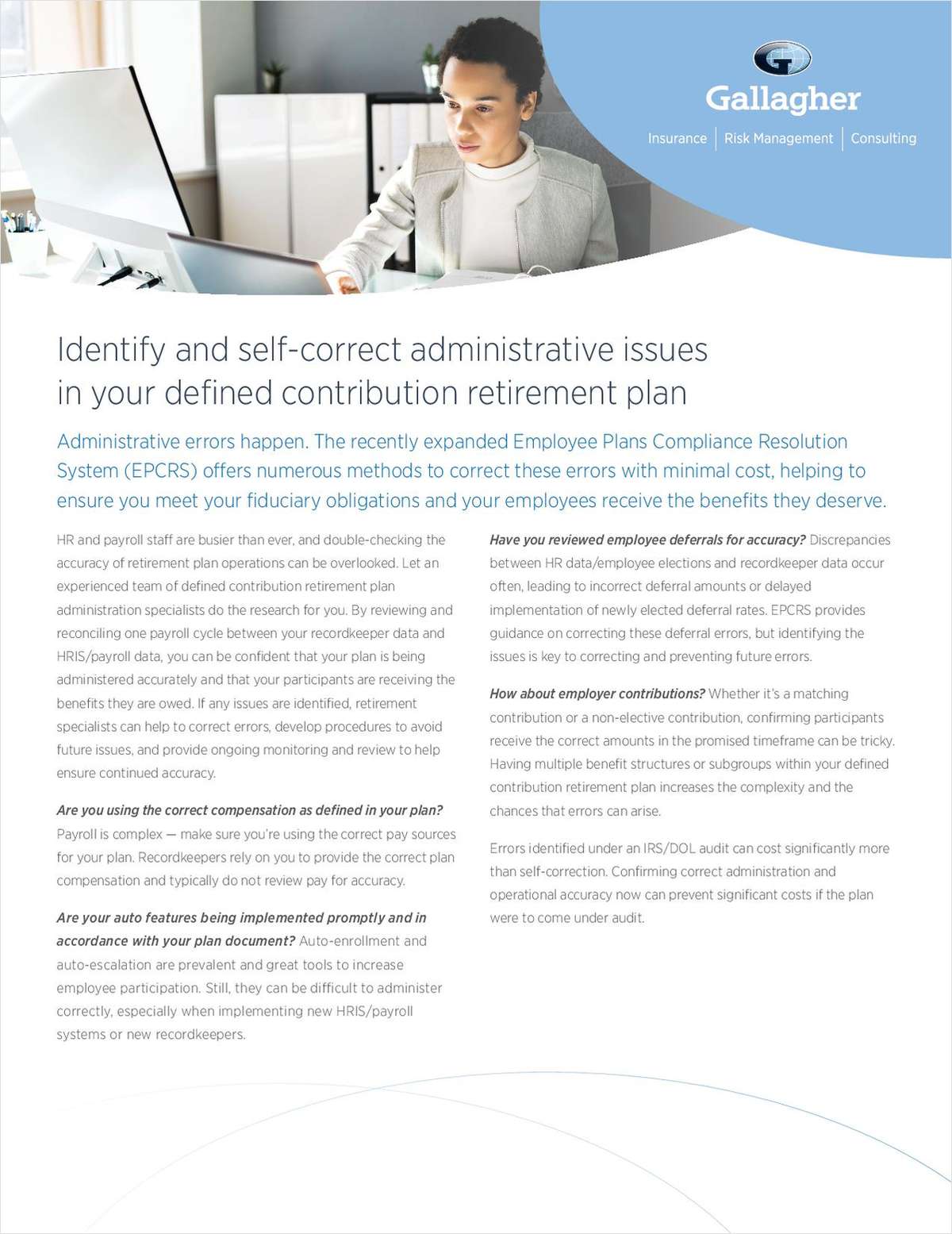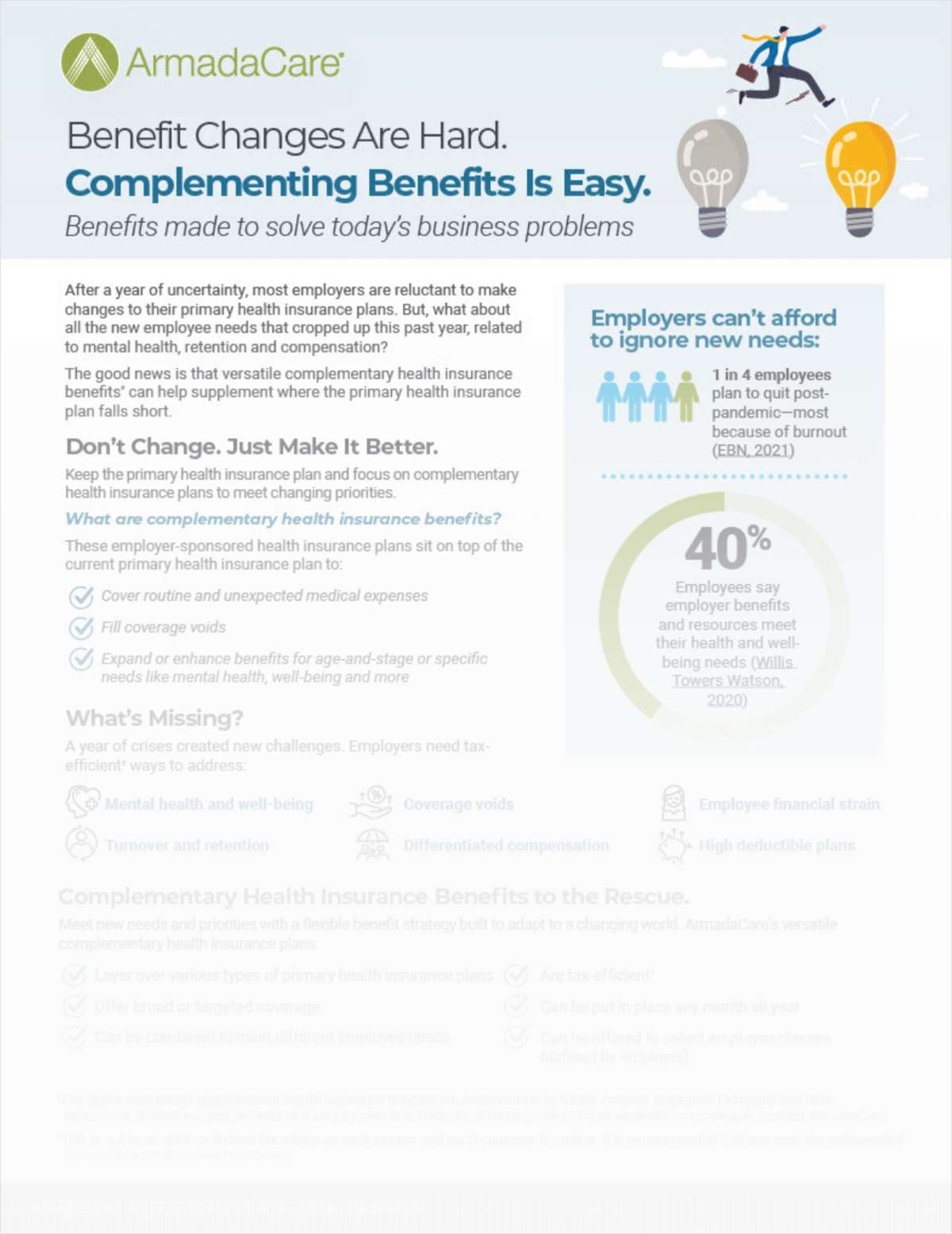The nonpartisan Employee Benefit Research Institute sums up what is known about CDHPs and examines trends in offer rates and enrollment. It also looks at differences in premiums between CDHPs and other types of insurance, and discusses the drivers of the premium differences:
The report is in the August 2010 EBRI Issue Brief, available online at www.ebri.org.
Among the key points:
|- Offer rates: Surveys show that employers offering a CDHP increased from less than 5 percent in 2005 to between 12 percent to 15 percent by 2009.
|Growth in offer rates can be seen across all firm sizes. Recently, the percentage of small firms offering a CDHP has declined, while larger firms have continued to add a CDHP as an option.
- Enrollment: Overall, 19.1 million, or 11 percent of individuals with private health insurance, were enrolled in a CDHP in 2009.
- Premiums: Generally, premiums for CDHPs were lower than premiums for non-CDHPs. Growth in premiums varies both by type of plan and over time.
- Explaining differences in premiums: A number of studies have tried to explain the differences in premiums between CDHPs and non-CDHPs. One found savings ranged from a high of 15.5 percent to a low of -4.7 percent, with average savings of 4.8 percent.
|However, the study found that most of the savings was due to younger, healthier workers choosing CDHPs and concluded that once typical risk- and benefit-adjustment factors were taken into account, CDHPs saved only 1.5 percent.
There is strong evidence that, initially, CDHP enrollees will be healthier than non-CDHP enrollees, but that over time the CDHP population has a significantly higher illness burden.
- Impact of CDHPs on preventive services: The studies agree that use of preventive services did not change (upward or downward) as a result of the CDHP.
- Impact of CDHPs on medication adherence: The studies found that overall use of brand name prescription drugs fell among CDHP enrollees, and, while there was some offset from increased use of generic drugs, some enrollees stopped their use of prescription drugs. CDHP enrollees increased their use of the mail-order pharmacy option. Overall use of prescription drugs among CDHP enrollees with certain chronic conditions fell, or did not increase when enrollees met their deductible. One study found that the financial incentives of the plan are not sufficient in driving behavior, and that educational outreach also matters.
Complete your profile to continue reading and get FREE access to BenefitsPRO, part of your ALM digital membership.
Your access to unlimited BenefitsPRO content isn’t changing.
Once you are an ALM digital member, you’ll receive:
- Breaking benefits news and analysis, on-site and via our newsletters and custom alerts
- Educational webcasts, white papers, and ebooks from industry thought leaders
- Critical converage of the property casualty insurance and financial advisory markets on our other ALM sites, PropertyCasualty360 and ThinkAdvisor
Already have an account? Sign In Now
© 2024 ALM Global, LLC, All Rights Reserved. Request academic re-use from www.copyright.com. All other uses, submit a request to [email protected]. For more information visit Asset & Logo Licensing.








